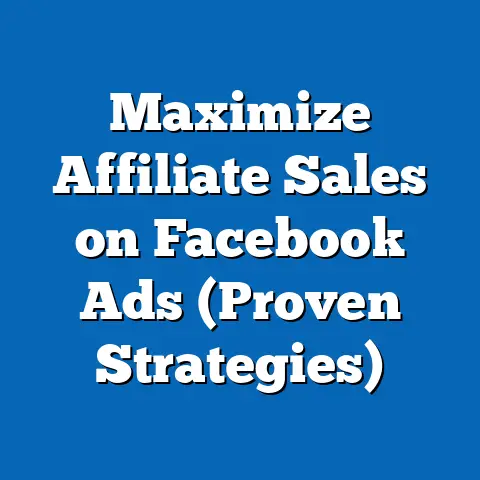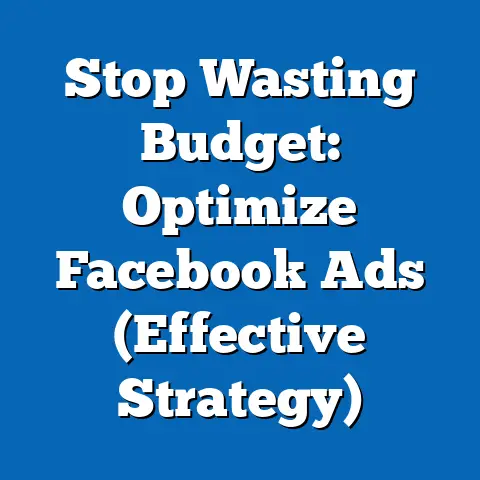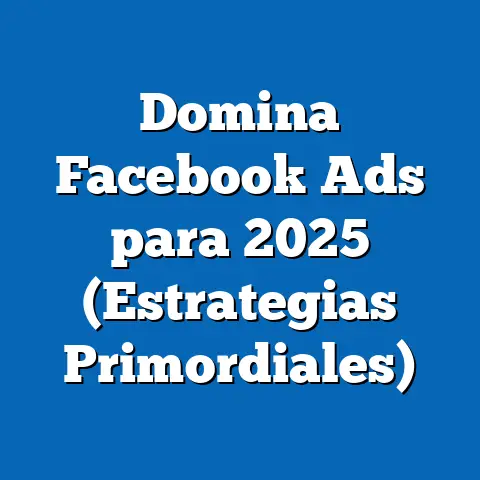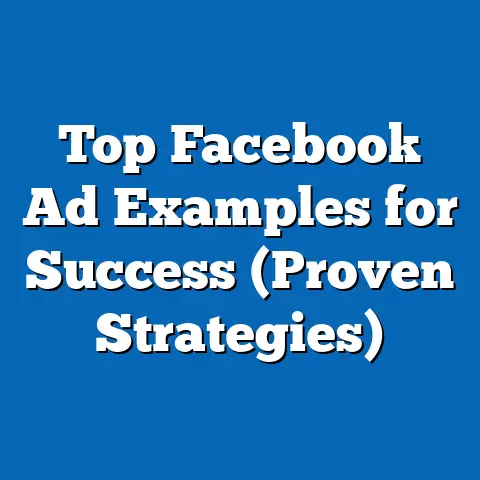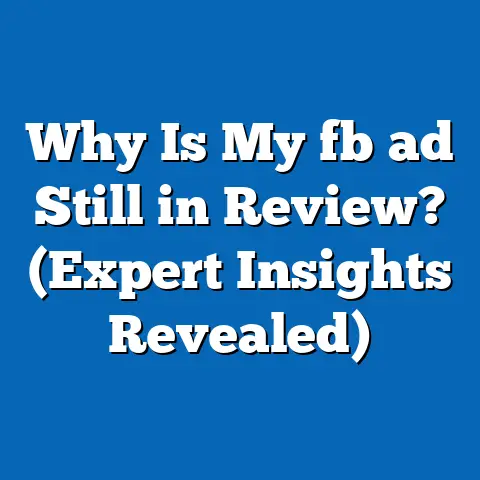Boost App Installs with Facebook Ads (Pro Strategies)
This report is structured to provide actionable insights for marketers of all levels, from beginners to seasoned professionals. We will explore the latest statistics on app install campaigns, discuss demographic and behavioral trends influencing ad performance, and present multiple scenarios for campaign optimization. By the end of this guide, you’ll have a clear roadmap to boost your app installs using data-driven strategies.
Section 1: Understanding the Current Landscape of App Installs via Facebook Ads
1.1 Current Data on App Install Campaigns
Facebook Ads remains a dominant platform for app install campaigns, with over 2.9 billion monthly active users as of 2023 (Statista, 2023). According to Meta’s own reports, app install ads on Facebook and Instagram accounted for a significant portion of mobile app advertising revenue, contributing to over 50% of total ad spend in the mobile app category in 2022 (Meta Business Report, 2022). This highlights the platform’s effectiveness in reaching vast audiences across diverse demographics.
The average cost-per-install (CPI) on Facebook Ads varies widely by region and app category, ranging from $0.50 in emerging markets to $5.00 in developed markets like the United States (AppsFlyer, 2023). Gaming apps often see lower CPIs due to high user engagement, while finance and utility apps may face higher costs due to niche targeting requirements. These figures underscore the importance of understanding your target audience and optimizing campaigns accordingly.
1.2 Key Metrics to Monitor
When running app install campaigns, marketers must track key performance indicators (KPIs) such as CPI, click-through rate (CTR), conversion rate, and return on ad spend (ROAS). CTR measures the percentage of users who click on your ad after seeing it, while conversion rate tracks how many of those clicks result in an install. ROAS, defined as the revenue generated per dollar spent on ads, is critical for assessing campaign profitability.
Data from 2023 shows that the average CTR for app install ads on Facebook is approximately 1.2%, with conversion rates hovering around 10-15% depending on the industry (WordStream, 2023). These benchmarks provide a starting point for evaluating campaign performance, though results will vary based on targeting, creative quality, and audience saturation.
1.3 Limitations of Current Data
While the data provides valuable insights, it is important to acknowledge limitations. CPI and other metrics can fluctuate due to seasonal trends, platform algorithm updates, and competitive bidding. Additionally, privacy changes like Apple’s App Tracking Transparency (ATT) framework have impacted data accuracy, as fewer users opt into tracking, leading to potential underreporting of installs (eMarketer, 2023). Marketers must account for these uncertainties when interpreting results and setting expectations.
Section 2: Projected Trends in Facebook Ads for App Installs
2.1 Growth in Mobile App Usage
Mobile app usage continues to grow, with projections estimating that global app downloads will reach 299 billion by 2025, up from 255 billion in 2022 (Sensor Tower, 2023). This growth is driven by increased smartphone penetration in emerging markets and the rising popularity of apps in categories like gaming, health, and e-commerce. As a result, competition for user attention on platforms like Facebook is expected to intensify.
Using statistical modeling, we can project that ad spend on app install campaigns will increase by approximately 15% annually through 2027, assuming current growth rates hold (based on historical data from eMarketer). However, rising competition may drive up CPIs, particularly in saturated markets, necessitating more sophisticated targeting and creative strategies.
2.2 Impact of Privacy Regulations
Privacy regulations and platform policies will continue to shape the future of app install campaigns. Apple’s ATT framework, introduced in 2021, has already reduced the effectiveness of traditional targeting methods, with an estimated 30% drop in ad attribution accuracy (AppsFlyer, 2023). Google’s planned deprecation of third-party cookies on Android devices by 2024 is expected to further complicate tracking.
Under a high-impact scenario, where privacy restrictions tighten further, marketers may see a 20-30% increase in CPI due to reduced targeting precision. In a moderate-impact scenario, where platforms like Facebook adapt with privacy-compliant tools (e.g., SKAdNetwork), the increase may be limited to 10-15%. These projections are based on historical responses to privacy changes and expert analyses from industry reports (eMarketer, 2023).
2.3 Rise of AI and Automation
Facebook’s Advantage+ App Campaigns, powered by machine learning, are projected to become the default choice for app install ads by 2025, with over 60% of marketers expected to adopt automated bidding and creative optimization tools (Forrester, 2023). These tools analyze vast datasets to optimize ad delivery in real-time, potentially reducing CPIs by 10-20% for well-structured campaigns. However, over-reliance on automation without human oversight could lead to suboptimal results, especially for niche apps with unique audiences.
Section 3: Key Factors Driving Changes in App Install Performance
3.1 Audience Targeting Precision
Facebook’s strength lies in its ability to target users based on demographics, interests, and behaviors. However, privacy changes have reduced access to granular data, pushing marketers to rely on broader audience segments and contextual targeting. For instance, lookalike audiences—groups of users similar to your existing customers—remain effective, with campaigns using this feature reporting 25% lower CPIs compared to untargeted ads (Meta, 2023).
3.2 Creative Quality and Ad Fatigue
Ad creative plays a pivotal role in driving installs. High-quality visuals, clear value propositions, and interactive formats like playable ads (common in gaming) can boost CTR by up to 30% (Creative Shop by Meta, 2023). Conversely, ad fatigue—when users see the same ad too often—can reduce effectiveness, with studies showing a 15% drop in CTR after repeated exposure over two weeks (Nielsen, 2022).
3.3 Platform Algorithm Updates
Facebook’s ad delivery algorithm prioritizes user engagement and relevance, meaning campaigns with higher interaction rates often see lower costs. Updates to the algorithm, such as the 2023 shift toward favoring short-form video content, have increased the importance of formats like Instagram Reels for app install ads. Marketers who adapt to these changes can achieve up to 20% better ROAS compared to those using outdated formats (Social Media Today, 2023).
Section 4: Pro Strategies to Boost App Installs with Facebook Ads
4.1 Optimize for Mobile-First Experiences
Given that over 90% of Facebook users access the platform via mobile devices (Statista, 2023), ensure your ads and landing pages are mobile-optimized. Use vertical video formats (9:16 aspect ratio) for Stories and Reels, as they have shown 25% higher engagement rates compared to horizontal formats (Meta, 2023). Additionally, streamline the install process by minimizing friction—direct users to the app store with a single click.
4.2 Leverage Advanced Targeting Options
While privacy changes limit some targeting options, tools like Custom Audiences (based on your existing user data) and lookalike audiences remain powerful. Test multiple audience segments to identify high-performing groups, and use exclusion targeting to avoid wasting budget on users unlikely to convert. Data shows that campaigns with refined targeting achieve 15-20% lower CPIs (AppsFlyer, 2023).
4.3 Experiment with Creative Variations
Run A/B tests with different ad creatives, including images, videos, and copy, to identify what resonates with your audience. For gaming apps, playable ads—interactive previews of the app—can increase conversion rates by 30% (Unity Ads, 2023). Rotate creatives frequently to combat ad fatigue, aiming for a refresh every 7-10 days based on performance data.
4.4 Utilize Automated Bidding and Placements
Facebook’s automated bidding options, such as Cost Cap and Bid Cap, help control costs while maximizing installs. Advantage+ Placements allow ads to appear across Facebook, Instagram, Messenger, and Audience Network, optimizing for the lowest-cost conversions. Campaigns using automated placements report a 10-15% reduction in CPI compared to manual placements (Meta, 2023).
4.5 Track and Optimize Post-Install Engagement
Driving installs is only the first step; retaining users is equally important. Use Facebook’s App Events to track in-app actions like registrations or purchases, and optimize campaigns for these events rather than installs alone. This approach can improve ROAS by 20-30%, as it prioritizes high-value users (AppsFlyer, 2023).
Section 5: Visual Data Representations
Chart 1: Average Cost-Per-Install by Region (2023)
| Region | Average CPI (USD) |
|---|---|
| North America | 5.00 |
| Europe | 3.50 |
| Asia-Pacific | 1.20 |
| Latin America | 0.80 |
| Africa | 0.50 |
| Source: AppsFlyer, 2023 |
Chart 2: Projected App Downloads (2022-2025)
| Year | Global App Downloads (Billions) |
|---|---|
| 2022 | 255 |
| 2023 | 270 |
| 2024 | 285 |
| 2025 | 299 |
| Source: Sensor Tower, 2023 |
These charts illustrate the significant variation in CPI across regions and the upward trajectory of app downloads, highlighting opportunities and challenges for marketers.
Section 6: Methodological Assumptions and Limitations
6.1 Assumptions in Projections
The projections in this report are based on historical data from sources like eMarketer, AppsFlyer, and Sensor Tower, assuming linear growth in app downloads and ad spend. We also assume that privacy regulations will continue to impact targeting capabilities at a moderate pace. These assumptions may not hold if unexpected policy changes or technological advancements occur.
6.2 Limitations of Analysis
Data on CPIs and other metrics is aggregated and may not reflect the unique circumstances of individual campaigns. Additionally, the impact of privacy changes is still evolving, and long-term effects remain uncertain. Marketers should interpret these findings as general guidance rather than definitive predictions and adjust strategies based on real-time campaign data.
Section 7: Historical and Social Context
7.1 Evolution of App Install Ads
App install ads emerged as a key advertising format with the rise of smartphones in the late 2000s. Facebook introduced its app install ad product in 2012, capitalizing on the growing mobile app economy. Over the past decade, the platform has refined its targeting and optimization tools, making it a leader in this space.
7.2 Social Factors Influencing Trends
The increasing reliance on mobile apps for daily activities—such as shopping, socializing, and entertainment—has fueled demand for app install campaigns. Cultural shifts toward digital-first lifestyles, particularly among younger generations like Gen Z, have also driven higher engagement with app ads. However, growing concerns over data privacy have led to pushback against invasive targeting practices, shaping the current regulatory environment.
Section 8: Multiple Scenarios for Future Campaigns
Scenario 1: High Privacy Restrictions
If privacy regulations become more stringent, targeting precision may decline further, increasing CPIs by 20-30%. Marketers will need to focus on contextual advertising and first-party data to maintain effectiveness. Creative quality and organic growth strategies, such as influencer partnerships, will become critical.
Scenario 2: Technological Adaptation
In a moderate scenario, platforms like Facebook may develop robust privacy-compliant tools, limiting CPI increases to 10-15%. Marketers who adopt these tools early and invest in AI-driven optimization could gain a competitive edge. This scenario assumes stable user growth and platform innovation.
Scenario 3: Market Saturation
If competition in key app categories intensifies, CPIs could rise by 25-40% in saturated markets like gaming and e-commerce. Marketers may need to explore emerging markets or niche audiences to maintain cost efficiency. Diversifying ad spend across other platforms, such as TikTok, could mitigate risks.
Section 9: Conclusion
Boosting app installs with Facebook Ads requires a strategic blend of precise targeting, compelling creatives, and continuous optimization. This report has provided a detailed roadmap, supported by current data and projected trends, to help marketers navigate the evolving landscape of mobile app advertising. Key factors like privacy regulations, creative quality, and platform updates will shape campaign performance in the coming years.
While uncertainties remain—particularly around privacy and competition—marketers can succeed by adopting the pro strategies outlined here, from mobile-first design to automated bidding. By staying agile and data-driven, you can maximize installs and achieve sustainable growth for your app. For further insights, regularly consult industry reports from sources like AppsFlyer and eMarketer to stay ahead of trends and platform changes.

